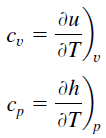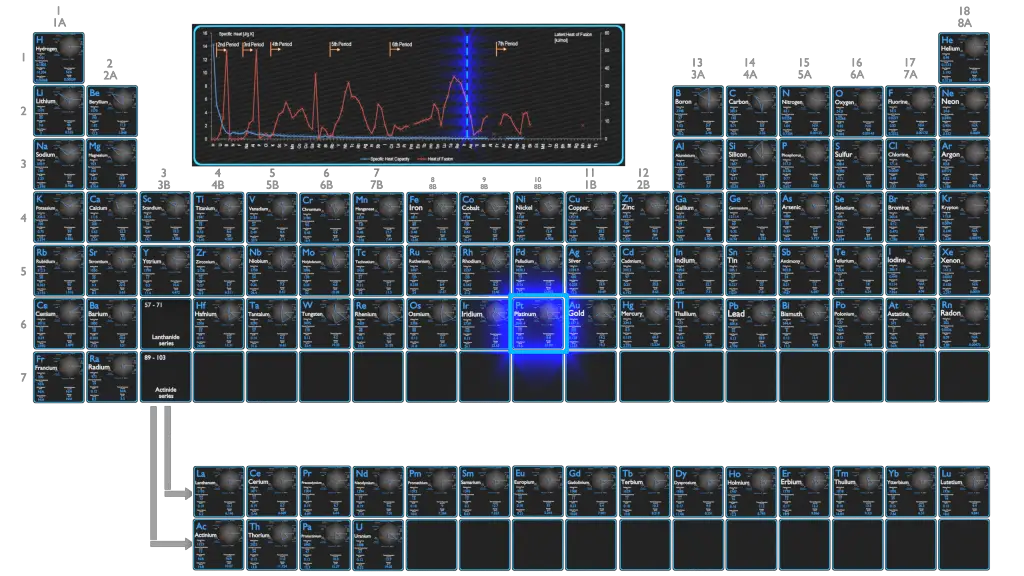About Platinum
Platinum is a dense, malleable, ductile, highly unreactive, precious, silverish-white transition metal. Platinum is one of the least reactive metals. It has remarkable resistance to corrosion, even at high temperatures, and is therefore considered a noble metal. Platinum is used in catalytic converters, laboratory equipment, electrical contacts and electrodes, platinum resistance thermometers, dentistry equipment, and jewelry.
Platinum – Specific Heat, Latent Heat of Fusion, Latent Heat of Vaporization
Specific heat of Platinum is 0.13 J/g K.
Heat capacity is an extensive property of matter, meaning it is proportional to the size of the system. Heat capacity C has the unit of energy per degree or energy per kelvin. When expressing the same phenomenon as an intensive property, the heat capacity is divided by the amount of substance, mass, or volume, thus the quantity is independent of the size or extent of the sample.
Latent Heat of Fusion of Platinum is 19.6 kJ/mol.
Latent Heat of Vaporization of Platinum is 510 kJ/mol.
Latent heat is the amount of heat added to or removed from a substance to produce a change in phase. This energy breaks down the intermolecular attractive forces, and also must provide the energy necessary to expand the gas (the pΔV work). When latent heat is added, no temperature change occurs. The enthalpy of vaporization is a function of the pressure at which that transformation takes place.
See also: Mechanical Properties of Platinum
Summary
| Element | Platinum |
| Specific Heat | 0.13 J/g K |
| Heat of Fusion | 19.6 kJ/mol |
| Heat of Vaporization | 510 kJ/mol |
| Density | 21.09 g/cm3 |
Source: www.luciteria.com


















